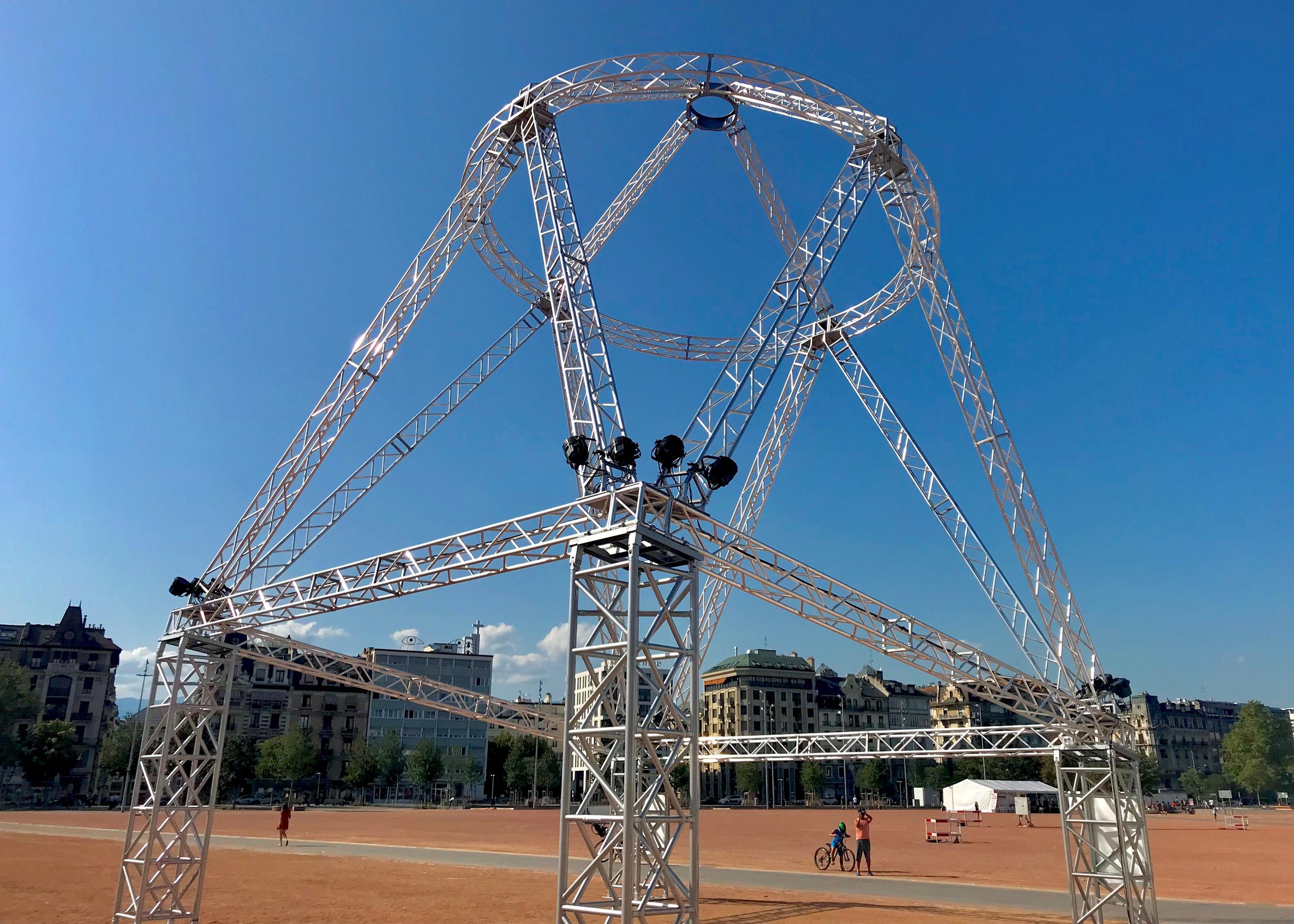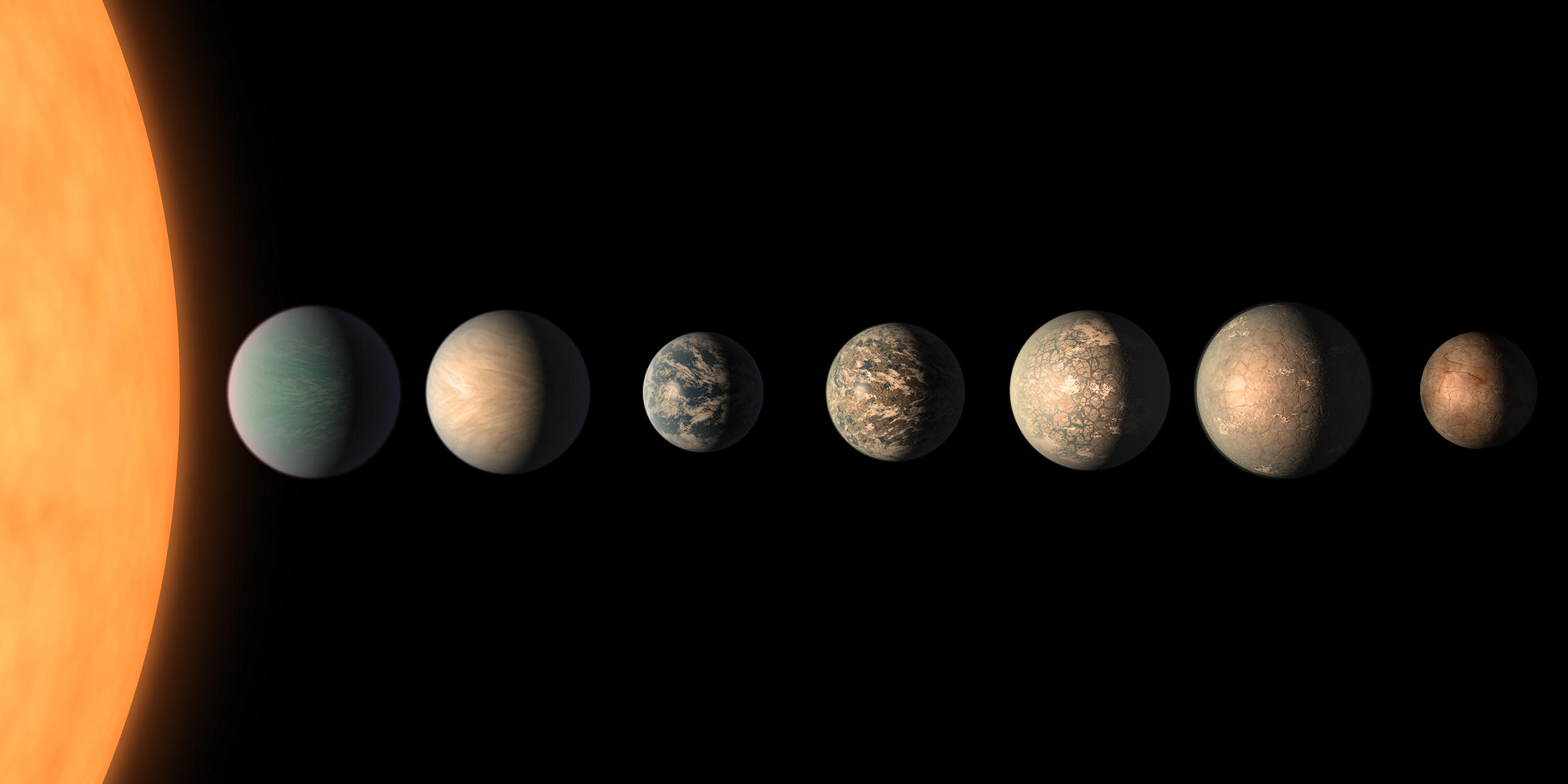Why Geneva remains at the centre of exoplanet research

A major international gathering of those searching for planets outside our solar system is a chance for home-grown astronomers to highlight their contributions to the field, not least the CHEOPS space telescope.
“When you see a picture of the Eiffel Tower, you say to yourself, ‘Oh yes, not bad…’, but when you are at the foot of the monument, it has a different impact,” says astronomer Pierre Bratschi.
With this idea in mind, he and his colleagues at the Geneva Observatory decided to create a life-sized replica of one of the four large instruments that make up the Very Large TelescopeExternal link (VLT). The original VLT, used for observing the far reaches of space, is located in the Atacama Desert in Chile.
The 15-metre-high structure has been placed on the grounds of the Plainpalais park in Geneva for the duration of a meeting of planetary scientists – those who search for planets orbiting stars outside our solar system – taking place in the city this month. Next to the VLT replica is a more modest reproduction, this one of the CHEOPS space telescope.
Astronomers have high hopes for the small instrument, which was developed by Swiss researchers. CHEOPS is due to be launched into orbit at the end of 2019 with a mission to observe exoplanets and learn more about their size and other characteristics. An abnormally high concentration of certain gases, such as oxygen, in the atmosphere of a planet can be interpreted as a sign of the presence of life. The photos the telescope delivers will be analysed in Geneva.
City of exoplanets

More
Is there life elsewhere?
Geneva is a fitting place to continue exoplanet research, since that’s where the cataloguing of such planets began. In 1995, Michel Mayor and Didier Quéloz at the Geneva Observatory announced the discovery of 51 Pegasus b, the first planet to be found which rotates around a star other than the sun. At the time, there were no more than a dozen scientists worldwide dedicated to the search for worlds so far away that none of their telescopes could see them.
Today, the catalogue of exoplanets is extensive, with more than 4,000 entries – or even 6,000, if the discoveries that are yet to be confirmed are taken into account. The study of these planets has become a major field in astrophysics research and revolves around finding the answer to the eternal question: are we alone in the universe?
There are now thousands of planetary scientists worldwide studying exoplanets and every four years, experts from Europe and the United States meet under the auspices of the European Congress of Planetary SciencesExternal link to share their experiences. Some 2,000 of them are in Geneva until September 20.
At the end of the Congress, the replica of the VLT will be transferred to the Geneva Observatory, which is located on the outskirts of the city and welcomes some 1,500 visitors each year.
“Everything about our discipline fascinates people, but there is still a lot of communicating to do,” says Bratschi. “We have to go and meet them.”

More
Billions of worlds to discover
Adapted from French by Geraldine Wong Sak Hoi

In compliance with the JTI standards
More: SWI swissinfo.ch certified by the Journalism Trust Initiative













You can find an overview of ongoing debates with our journalists here . Please join us!
If you want to start a conversation about a topic raised in this article or want to report factual errors, email us at english@swissinfo.ch.